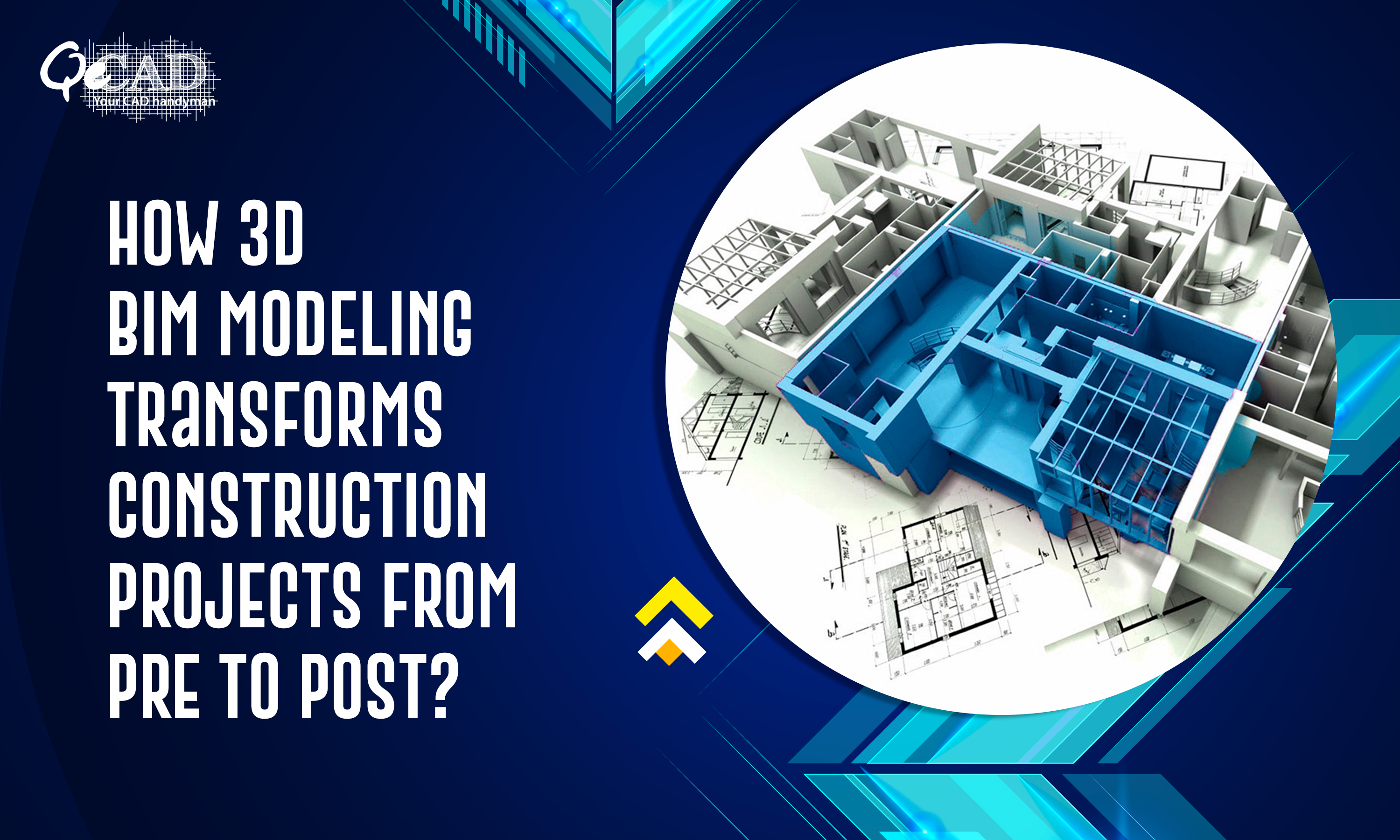
BIM has become one of the powerful tools in the AEC industries since its introduction. It offers a sophisticated approach to managing the building projects through every phase. Right from the initial design to the facilities management, 3D BIM Modeling brings the precision and efficiency to the entire project lifecycle.
Here is an insight at how BIM Services enhance each stage of construction.
Pre-Construction Phase: From Concept to Visualization
- Transforming Design Concepts into Realistic 3D Models
The pre-construction phase is quite crucial one for laying the groundwork of any successful construction project. BIM allows for the curation of a very comprehensive and realistic 3D models that translates the conceptual designs into tangible visualizations. These models go beyond mere aesthetics thereby incorporating comprehensive data about materials, structural elements, as well as spatial arrangements. This level of detail helps architects and engineers to explore various design scenarios ensuring that the final design meets client expectations and project requirements.
- Enhancing Client Communication and Engagement
The 3D BIM model improves the client communication as well as engagement by providing an immersive yet interactive view of the project. The visualizations offered by BIM are a clear representation of the designs unlike any traditional 2D drawings that are quite difficult to interpret. The clients can navigate through this virtual model, visualize different design elements, and also make informed decisions based on the BIM model. This interactive process not only aids in refining the construction designs but also strengthens communication between all project stakeholders.
- Early Clash Detection and Design Coordination
One of the major advantages of BIM in the pre-construction phase is its ability to identify and resolve clashes between different building systems like electrical, plumbing, as well as structural components and that too before even the actual construction begins. The early clash detection allows the team members to address the potential conflicts and make design adjustments thereby preventing costly rework or delays while construction. This proactive approach ensures a smoother transition to the construction phase ultimately minimizing the disruptions.
- Ensuring Design Integration and Efficiency
BIM allows for the design integration and efficiency by consolidating various disciplines into a single model. This integrated approach ensures that all the building components work together seamlessly thereby facilitating more effective coordination among AEC professionals. The result to this is a more streamlined workflow and a reduction in the likelihood of errors or omissions that could impact the project’s timeline or budget.
- Data-Driven Decision Making
BIM’s clash detection and design coordination capabilities are proven to enhance the data-driven decision-making. By evaluating different solutions and their impacts on the overall project, the teams can select the most effective approaches and optimize their design solutions. This informed decision-making process helps in achieving better project outcomes thereby minimizing risks.
Construction Phase: Managing Sequencing and On-Site Operations
- Visualizing the Construction Journey
In the construction phase too BIM remains crucial by helping in visualizing the construction process. 3D models help simulate the construction activities thereby allowing teams to plan and assess the sequence of tasks. This visualization helps in identifying potential challenges and ensuring efficient resource allocation which is crucial for maintaining the project’s schedule.
- Developing Detailed Project Timelines
BIM’s 4D modeling capabilities integrate time-based data with 3D models to create quite detailed project schedules. By linking construction activities to the BIM model, project managers can visualize the construction timelines, track progress, and also anticipate delays. This integration helps in managing time factor effectively ultimately keeping the project on schedule.
- Streamlining On-Site Management
BIM supports on-site operations by providing real-time access to updated models and project information. The construction teams can use mobile devices to refer the BIM model while on-site thereby ensuring that the work aligns with the proposed design. It also helps in catering any issues instantly. This real-time information enhances the collaboration and maintains the construction quality.
Post-Construction Phase: Facilities Management and Maintenance
- Optimizing Asset Management with BIM
In the post-construction phase, BIM transitions into facilities management and maintenance by offering valuable support for asset management. The detailed BIM model acts as a complete information repository for the building’s components, systems, and maintenance requirements. Facility managers can also leverage this data to track the asset performance, schedule the maintenance and manage repairs effectively ultimately cutting-down the operational costs and extending the lifespan of building systems.
- Improving Planning and Reducing Errors
BIM also enhances the planning processes in the post-construction phase by providing accurate and current/real-time information about the building. This data is invaluable for planning renovations, extensions, or future re-works. Additionally, this precise information in the BIM model helps in reducing errors thereby minimizing the risk of costly mistakes during maintenance or renovation activities.
- Achieving Better Outcomes with BIM
The implementation of BIM throughout the project lifecycle results in improved outcomes. From initial design to post-construction management, BIM enhances efficiency, accuracy, and collaboration. By visualizing, coordinating, and managing complex information, BIM contributes to the higher quality, cost effective, and successful project delivery.
Conclusion
3D BIM modeling services offer substantial benefits at every stage of a construction project. By opting for an expert BIM Services Provider, stakeholders can achieve precision, efficiency, and collaboration thereby leading to enhanced project results and long-term operational success. Whether in pre-construction planning, construction management, or post-construction facilities management, BIM proves to be an essential tool in modern construction practices.
